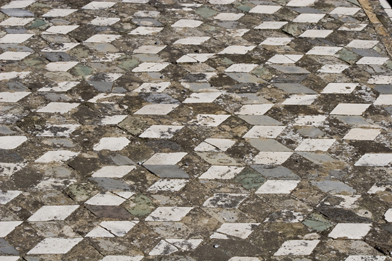Lesson 11
1. Lesson 11
1.1. Discover
Module 2: Logic and Geometry
Discover

iStockphoto/Thinkstock
The use of polygons in design and architecture is not a modern phenomenon. Polygons have been used for centuries in art and architectural details. In many cultures, polygons have symbolic meaning. Some designs and artifacts are even classified as sacred geometry. Polygons were also used when designing items for daily life. Master weavers and tilers used polygons to create illusions in pavement and baskets, for example.
Custom tile patterns or mosaics can be an exciting (and expensive) addition to a design. Tiling a floor or combining polygons to create a tessellation requires that polygons be arranged in a certain way. Some tiling uses only one shape while other designs use more than one shape. The success of the pattern depends on whether the shapes line up without gaps or overlaps. This requires careful planning.
Tilers and artists apply their knowledge of the measures of angles in a polygon when designing patterns. This helps them choose the correct shapes and visualize the final design.
Use the Interior Angles of Polygons applet to help Anita create tessellations. You may be required to submit a username and a password. You can obtain these from your teacher, if necessary. Select “Interior Angles of Polygons.” Start with the “Introduction” section, and then work your way through “Concept Development” section to the “Summary” section. In this applet you will learn how to find the measure of an interior angle in a regular polygon and determine the sum of the interior angles in a regular polygon.
